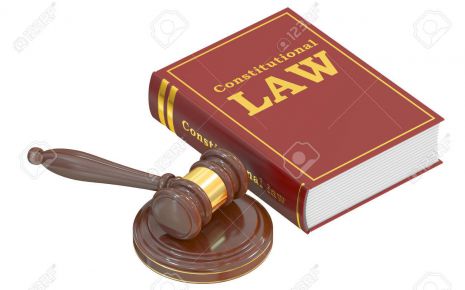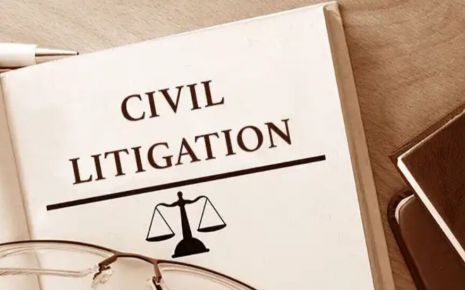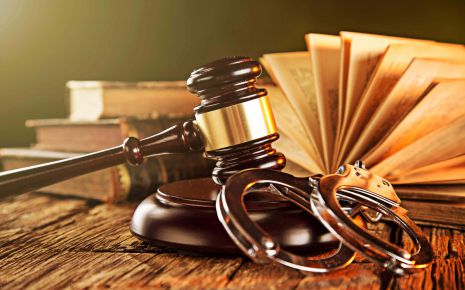Child Abuse: Legal Implications
This paper discusses about Child abuse in India. Child abuse happens across
all cultural, ethnic, and socioeconomic groups. Reason for Child abuse can also
be physical, emotional, verbal, sexual, or neglectful. Abuse can result in
significant damage or even death to a Child. Rape, sexual abuse, and sexual
harassment are rising issues in India. In India, there has been relatively
little research in this sector, and just a few books have been created, further
obscuring the issue.
However, the problem persists with remarkable frequency, and the distinctive character of Indians adds complication to an already difficult situation. Fortunately, child sexual abuse is gradually becoming a recognised issue. The reason for Child Abuse includes deprivation of a Childs rights which includes economic, social, and cultural rights such as the right to an education, a fair standard of living, health care, and so on.
Children's rights are a subset of human rights that pay special emphasis to kids' rights to specific protection and care. This research paper tries to discuss about problems faced by children's and laws present to protect them.
Background
Child abuse is the emotional, physical, financial, and sexual exploitation of children under the age of 18, and it is a worldwide problem. However, the size, breadth, and trends of the problem remain unknown in India, as they are in many other nations. The expanding complexities of life, as well as severe socioeconomic changes in India, have made youngsters more vulnerable to different types of exploitation.
Child abuse has substantial physical and emotional implications that are detrimental to a child's health and well-being. "Child abuse or maltreatment is any type of physical and/or mental abuse, sexual violence, neglect or neglect, or commercial or other exploitation that results in real or prospective impairment to a child's health, survival or development" as even according to the World Health.
Introduction
Child abuse is defined as injuring or neglecting another person's youngster, whether an adult or a child. Child abuse happens across all cultural, ethnic, and socioeconomic groups. Child abuse can be physical, emotional, verbal, sexual, or neglectful. Child abuse can result in serious damage or even death. Rape, sexual abuse, and sexual harassment are all global issues of sexual violence.
In India, relatively little study has been conducted in this sector, and just a few books have been published, further obscuring the issue. However, the problem persists with amazing frequency, and the distinctive character of Indians adds complication to an already difficult situation. Fortunately, child sexual abuse is gradually becoming a more acknowledged problem, which is why this page concentrates mainly on child sexual abuse: laws, victims, and offenders.
Finally, an examination of features of Indian culture that make this situation particularly difficult to comprehend and address. Childhood should be a carefree period, full of love and the delight of discovering new things and experiences. However, this is the desire of many youngsters. Child abuse and neglect is a major social issue of a children that he faces and these led to the problems that are faced by a child and becomes a major issue for a child.
Child abuse and neglect have long-term implications for victims (of all human actions), their families, and society. Child abuse is characterised as physical, mental, or sexual abuse of children. It may happen in any organisation, school, community, or even a children's family.
Child abuse includes emotional, physical, financial, and sexual exploitation of children. It affects people under the age of 18 worldwide. However, the breadth, scale, and trends of the problem remain unknown in India, as in many other nations.
The drastic changes brought about by India's socioeconomic developments have greatly contributed to children's increased vulnerability to varied and novel types of violence. Despite enthusiastic planning, social programmes, legislation, and administrative procedures, Most of India's children have died in the previous six decades. Continue to battle and be perplexed. Parents in most households ignore them. Caretakers mistreated and sexually molested by employers.
Although the problem of mental, physical, and sexual abuse of children is becoming more prevalent in India, it has yet to get the attention of sociologists and psychiatrists in our nation. Neither the public nor the government have acknowledged it as a major issue. Public indignation and professional concern have yet to be transformed into constructive and realistic action. Child abuse or maltreatment, according to the World Health Organization (WHO)," is any kind of physical and/or mental abuse, sexual abuse, neglect or neglect, or commercial or other exploitation that results in real or prospective harm to a child. child's health, survival, growth, or dignity in terms of duty, trust, or authority ."[1]
When we talk about child abuse there are mainly four types they are as follows:
Physical abuse: An abuse which comes from physical aggression can be called physical abuse. If the intention was not intended to injure the person can be considered as physical abuse. An injury which is caused by beating, slapping, kicking, burning etc can be considered as a physical abuse.
Thousands of children die due to physical abuse by their close ones. Some of the physical abuse cases get reported and some of them are not. Sometimes physical punishment will get converted into physical abuse. Due to physical abuse some children's die and some of them survive with emotional and physical scars.
Signs Of Physical Abuse:
Child Sexual Abuse:
Any act which includes a sexual act between adult and a child can be considered as a sexual abuse.
Sexual Intercourse Include Rape, Oral Sex, Intercourse Another Example Include:
Regardless of the child's behaviour it is the responsibility of the adults to educate children and it is also the responsibility of the adults to not engage in sexual act with children. Sexual abuse can never be child's fault.
Signs Of Sexual Abuse:
Emotional Abuse
Any attitude, action, or behaviour that prevents a kid's social or mental growth is considered emotional child abuse. When different forms of abuse are discovered, emotional abuse is nearly always present as well. Surprisingly, emotional abuse can worsen long-term psychiatric conditions than either physical or sexual abuse.
Adults Or Other Children May Emotionally Abuse A Child:
Child Neglect:
According to Child Welfare Information Gateway, physical and sexual abuse combined cause more children to experience neglect. A very prevalent kind of child abuse is child neglect. However, neglect is a form of child abuse that is an act of omission, or failing to take action, hence victims are not frequently detected.
Some Signs of Child Neglect:
National Commission for Protection of Child Rights (NCPCR) Act, 2005:
This act provides and safeguards and keep a check of the rights of children as well as women.
Protection of Children from Sexual Offences Act (POCSO), 2012:
This act provides that the Child sexual abuse laws in India should be enacted as part of the child protection policies of India
ARTICLES OF INDIAN CONSTITUTION RELATING TO CHILDREN
The Indian Constitution recognises the vulnerable position of children and their right to protection. The idea of protection of rights, which also includes Article 15 assures special attention to children by needed and distinctive laws and policies that safeguard their rights.
The rights regarding the right to equality, and the article regarding them also include Article 14, 15, 15(3), 19(1) (a), 21, 21(A). 23 what includes children as well:
Initiative/ Approach Towards Child Abuse:
Conclusion
Child abuse and neglect may have severe and long-term impacts on the child, as well as negative social consequences such as greater engagement in the juvenile and criminal justice systems. However, Communities may take action to reduce and even eliminate the repercussions of abuse.
Evidence-based services and supports can enhance protective factors that lessen the impacts of abuse and give tools for families and communities to prevent abuse from occurring. Child welfare agencies can assist with families and children. Communities must take the lead in projects that build on their strengths and address needs.
India's Legal Position on Child Abuse and Prevention Solutions to End Violence, Exploitation, and Exploitation. Progress has been achieved in raising societal awareness, changing laws, and encouraging the elimination of child violence, abuse, and exploitation, but more needs to be done. ensuring that survivors and their families get sensitive and prompt protection and services UNICEF works on enforcing critical child protection legislation and encouraging policies that safeguard children from violence, abuse, and exploitation.
Although child abuse is a big and complicated problem with numerous causes, we should not take a deficit approach to its prevention. Although there is no good evidence to guide our preventative efforts, there are several things' physicians may take to avoid malpractice. At the absolute least, demonstrating greater care for the parent or guardian, as well as our attempts to enhance the abilities of those parents or guardians, can assist spare our most vulnerable patients from the horror of abuse and neglect.
Overall, rape and sexual abuse of minors in India is a significant problem with no clear cure. While the problem persists globally, India's culture, which historically views women as inferior to males, makes it hard to discuss intimate things such as, and a corrupt and poor judicial system when it comes to rape exacerbates the situation.
However, appropriate sexual abuse education for children and adults, as well as police training and tightening of legislation, might help to improve the issue.
References:
However, the problem persists with remarkable frequency, and the distinctive character of Indians adds complication to an already difficult situation. Fortunately, child sexual abuse is gradually becoming a recognised issue. The reason for Child Abuse includes deprivation of a Childs rights which includes economic, social, and cultural rights such as the right to an education, a fair standard of living, health care, and so on.
Children's rights are a subset of human rights that pay special emphasis to kids' rights to specific protection and care. This research paper tries to discuss about problems faced by children's and laws present to protect them.
Background
Child abuse is the emotional, physical, financial, and sexual exploitation of children under the age of 18, and it is a worldwide problem. However, the size, breadth, and trends of the problem remain unknown in India, as they are in many other nations. The expanding complexities of life, as well as severe socioeconomic changes in India, have made youngsters more vulnerable to different types of exploitation.
Child abuse has substantial physical and emotional implications that are detrimental to a child's health and well-being. "Child abuse or maltreatment is any type of physical and/or mental abuse, sexual violence, neglect or neglect, or commercial or other exploitation that results in real or prospective impairment to a child's health, survival or development" as even according to the World Health.
Introduction
Child abuse is defined as injuring or neglecting another person's youngster, whether an adult or a child. Child abuse happens across all cultural, ethnic, and socioeconomic groups. Child abuse can be physical, emotional, verbal, sexual, or neglectful. Child abuse can result in serious damage or even death. Rape, sexual abuse, and sexual harassment are all global issues of sexual violence.
In India, relatively little study has been conducted in this sector, and just a few books have been published, further obscuring the issue. However, the problem persists with amazing frequency, and the distinctive character of Indians adds complication to an already difficult situation. Fortunately, child sexual abuse is gradually becoming a more acknowledged problem, which is why this page concentrates mainly on child sexual abuse: laws, victims, and offenders.
Finally, an examination of features of Indian culture that make this situation particularly difficult to comprehend and address. Childhood should be a carefree period, full of love and the delight of discovering new things and experiences. However, this is the desire of many youngsters. Child abuse and neglect is a major social issue of a children that he faces and these led to the problems that are faced by a child and becomes a major issue for a child.
Child abuse and neglect have long-term implications for victims (of all human actions), their families, and society. Child abuse is characterised as physical, mental, or sexual abuse of children. It may happen in any organisation, school, community, or even a children's family.
Child abuse includes emotional, physical, financial, and sexual exploitation of children. It affects people under the age of 18 worldwide. However, the breadth, scale, and trends of the problem remain unknown in India, as in many other nations.
The drastic changes brought about by India's socioeconomic developments have greatly contributed to children's increased vulnerability to varied and novel types of violence. Despite enthusiastic planning, social programmes, legislation, and administrative procedures, Most of India's children have died in the previous six decades. Continue to battle and be perplexed. Parents in most households ignore them. Caretakers mistreated and sexually molested by employers.
Although the problem of mental, physical, and sexual abuse of children is becoming more prevalent in India, it has yet to get the attention of sociologists and psychiatrists in our nation. Neither the public nor the government have acknowledged it as a major issue. Public indignation and professional concern have yet to be transformed into constructive and realistic action. Child abuse or maltreatment, according to the World Health Organization (WHO)," is any kind of physical and/or mental abuse, sexual abuse, neglect or neglect, or commercial or other exploitation that results in real or prospective harm to a child. child's health, survival, growth, or dignity in terms of duty, trust, or authority ."[1]
When we talk about child abuse there are mainly four types they are as follows:
- Physical Abuse
- Sexual Abuse
- Psychological Abuse/ Emotional Abuse
- Neglect
Physical abuse: An abuse which comes from physical aggression can be called physical abuse. If the intention was not intended to injure the person can be considered as physical abuse. An injury which is caused by beating, slapping, kicking, burning etc can be considered as a physical abuse.
Thousands of children die due to physical abuse by their close ones. Some of the physical abuse cases get reported and some of them are not. Sometimes physical punishment will get converted into physical abuse. Due to physical abuse some children's die and some of them survive with emotional and physical scars.
Signs Of Physical Abuse:
- Fear Of Adults
- Resistance To Go Home/School Etc
- Burn Marks, Cuts, Bite Marks Etc
Child Sexual Abuse:
Any act which includes a sexual act between adult and a child can be considered as a sexual abuse.
Sexual Intercourse Include Rape, Oral Sex, Intercourse Another Example Include:
- Forcing Child To Undress
- Spying Child In Bathroom
- Exposing Children To Adult Sexuality
- Touching Or Kissing
Regardless of the child's behaviour it is the responsibility of the adults to educate children and it is also the responsibility of the adults to not engage in sexual act with children. Sexual abuse can never be child's fault.
Signs Of Sexual Abuse:
- Fear Of Particular Person
- Fear Of Some Family Member
- Avoidance Of Things Related To Sexuality
- Inappropriate Knowledge In Sexual Act
Emotional Abuse
Any attitude, action, or behaviour that prevents a kid's social or mental growth is considered emotional child abuse. When different forms of abuse are discovered, emotional abuse is nearly always present as well. Surprisingly, emotional abuse can worsen long-term psychiatric conditions than either physical or sexual abuse.
Adults Or Other Children May Emotionally Abuse A Child:
- Bullies In The Workplace Or At School
- The Caretakers Or Parents
- Siblings
Child Neglect:
According to Child Welfare Information Gateway, physical and sexual abuse combined cause more children to experience neglect. A very prevalent kind of child abuse is child neglect. However, neglect is a form of child abuse that is an act of omission, or failing to take action, hence victims are not frequently detected.
Some Signs of Child Neglect:
- Evident Absence Of Supervision
- Inappropriate Clothing
- Extreme Hunger.
Law And Policies Of Protection Of Children
- Policy and legal framework:
In India the Government tries to ensure that all the citizens as well as included the overall well-being of the children. To ensure that it's included in Article 14, 15, 15(3), 19(1) (a), 21, 21(A). 23. National Policy of children 2013, which aimed at safety and security of the children in all forms of abuses.
- Administrative Responsibility:
The Indian Government also established Ministry of Women and Child Development (MWCD) in order to secure the rights of children and women and keep a check on it.
- Federal Laws:
Juvenile Justice (Care and Protection of Children) Act, 2015- the main aim of this act was to ensure that the children those who are involved in these acts are properly treated under this act and also provide measures for the development of the child.
National Commission for Protection of Child Rights (NCPCR) Act, 2005:
This act provides and safeguards and keep a check of the rights of children as well as women.
Protection of Children from Sexual Offences Act (POCSO), 2012:
This act provides that the Child sexual abuse laws in India should be enacted as part of the child protection policies of India
ARTICLES OF INDIAN CONSTITUTION RELATING TO CHILDREN
The Indian Constitution recognises the vulnerable position of children and their right to protection. The idea of protection of rights, which also includes Article 15 assures special attention to children by needed and distinctive laws and policies that safeguard their rights.
The rights regarding the right to equality, and the article regarding them also include Article 14, 15, 15(3), 19(1) (a), 21, 21(A). 23 what includes children as well:
- Article 14: The State shall not deny to any person equality before the law or the equal protection of the laws within the territory of India
- Article 15: The State shall not discriminate against any citizen on grounds only of religion, race, caste, sex, place of birth or any of them
- Article 15 (3): Nothing in this article shall prevent the State from making any special provision for women and children
- Article 19(1) (a): All citizens shall have the right (a) to freedom of speech and expression
- Article 21: Protection of life and personal liberty-No person shall be deprived of his life or personal liberty except according to procedure established by law.
- Article 21A: Free and compulsory education for all children of the age of 6 to 14 years;
- Article 23: Prohibition of traffic in human beings and forced labour-(1) Traffic in human beings and beggars and other similar forms of forced labour are prohibited and any contravention of this provision shall be an offence punishable in accordance with law[2]
Initiative/ Approach Towards Child Abuse:
- Individual's approach towards child abuse:
adults/parents in the house should talk to their child about child abuse. As parents/guardians they have to take an initiative to teach their kid about good touch bad touch and other abuses which children might face in the society. It is also the responsibility of the educational institutions bring sexual awareness among children. Now government of Indian has made sexual awareness programs.
- Media initiative:
Making the Child aware about the surroundings and things so, the he does not get exploited in the future.
- NGO's:
Can also play in the development of the child and also give the child the basic needs which are required for him and help in his growth.
Conclusion
Child abuse and neglect may have severe and long-term impacts on the child, as well as negative social consequences such as greater engagement in the juvenile and criminal justice systems. However, Communities may take action to reduce and even eliminate the repercussions of abuse.
Evidence-based services and supports can enhance protective factors that lessen the impacts of abuse and give tools for families and communities to prevent abuse from occurring. Child welfare agencies can assist with families and children. Communities must take the lead in projects that build on their strengths and address needs.
India's Legal Position on Child Abuse and Prevention Solutions to End Violence, Exploitation, and Exploitation. Progress has been achieved in raising societal awareness, changing laws, and encouraging the elimination of child violence, abuse, and exploitation, but more needs to be done. ensuring that survivors and their families get sensitive and prompt protection and services UNICEF works on enforcing critical child protection legislation and encouraging policies that safeguard children from violence, abuse, and exploitation.
Although child abuse is a big and complicated problem with numerous causes, we should not take a deficit approach to its prevention. Although there is no good evidence to guide our preventative efforts, there are several things' physicians may take to avoid malpractice. At the absolute least, demonstrating greater care for the parent or guardian, as well as our attempts to enhance the abilities of those parents or guardians, can assist spare our most vulnerable patients from the horror of abuse and neglect.
Overall, rape and sexual abuse of minors in India is a significant problem with no clear cure. While the problem persists globally, India's culture, which historically views women as inferior to males, makes it hard to discuss intimate things such as, and a corrupt and poor judicial system when it comes to rape exacerbates the situation.
However, appropriate sexual abuse education for children and adults, as well as police training and tightening of legislation, might help to improve the issue.
References:
- https://www.researchgate.net/publication/337446201_Child_abuse_paper
- Term Effects of Child Abuse- https://journals.sagepub.com/doi/10.1177/1066480799072008
- https://research.virginia.edu/irb-sbs/child-abuse
- https://www.who.int/news-room/fact-sheets/detail/child-maltreatment
- https://www.constitutionofindia.net/constitution_of_india Article 15. 14, 15(3), 19(1) (a), 21, 21(A). 23
Law Article in India
Legal Question & Answers
Lawyers in India - Search By City
LawArticles
How To File For Mutual Divorce In Delhi

How To File For Mutual Divorce In Delhi Mutual Consent Divorce is the Simplest Way to Obtain a D...
Increased Age For Girls Marriage

It is hoped that the Prohibition of Child Marriage (Amendment) Bill, 2021, which intends to inc...
Facade of Social Media

One may very easily get absorbed in the lives of others as one scrolls through a Facebook news ...
Section 482 CrPc - Quashing Of FIR: Guid...

The Inherent power under Section 482 in The Code Of Criminal Procedure, 1973 (37th Chapter of t...
The Uniform Civil Code (UCC) in India: A...

The Uniform Civil Code (UCC) is a concept that proposes the unification of personal laws across...
Role Of Artificial Intelligence In Legal...

Artificial intelligence (AI) is revolutionizing various sectors of the economy, and the legal i...








Please Drop Your Comments